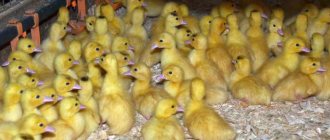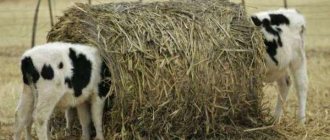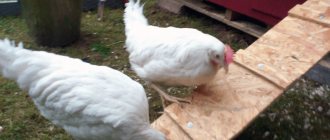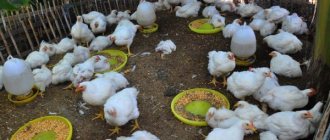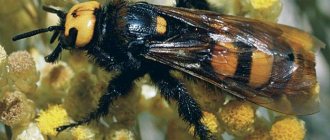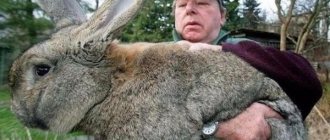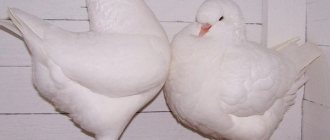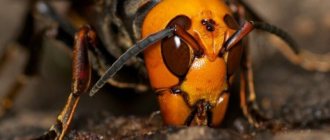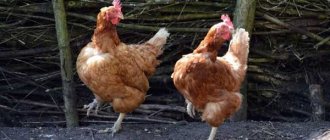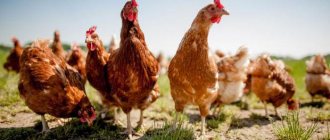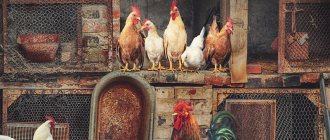Home » Articles about turkeys » The largest breed of turkeys
Turkey is one of the most productive poultry in terms of meat. The largest breeds are raised for meat and used in breeding to breed hybrids. The most popular turkeys in this category are broad-breasted, North Caucasian, Moscow, and hybrid converter.
Largest turkey: Canadian
Everyone knows that turkeys are the largest poultry. But among them there are also weight record holders. This is, for example, a Canadian turkey. It belongs to the broiler type and is the result of the work of Canadian breeders. This poultry has a characteristic and peculiar appearance:
- The body is compact and elongated. The chest is powerful and fleshy;
- The percentage of hatching eggs is very high.
- The plumage is black or white. It may be tinged with brown;
- They reach marketable weight at the age of three months;
The Canadian breed gains weight quickly. Reaches slaughter weight in three months.
Long and massive legs;
- They begin laying eggs at nine months of age;
- They eat easily and by one and a half months can weigh about five kilograms;
- The chin is like a fleshy appendage;
Fattening this cross is profitable until 90 days of age, then the bird goes to slaughter.
Characteristics: how much does it weigh
Main productivity indicators of Canadian turkeys:
| Indicators | Units | Performance |
| Turkey live weight | kg | up to 30 |
| Turkey live weight | kg | until 17 |
| Egg production rate | things | about 100 |
| Egg weight | grams | 70-80 |
| Laying period | months | from 9 to 15 |
| Hatching intensity | % | 93 |
Hybrid converter
Another large breed of turkey, the hybrid converter, is characterized by high growth rates. The hybrid was bred by Canadian breeders based on the white Dutch and bronze broad-breasted. The birds have a massive body with a wide chest. Their legs are powerful. By the 22nd week of life, males fatten up to 23-25 kg, in females the figures are more modest - 10-13 kg. The carcass has a marketable appearance, the meat is tasty. The plumage is white, the down is soft (it is valuable).
The birds are agile, run fast (reach speeds of up to 45 km/h), and can fly to a height of up to 2 m. They are well adapted to different climatic conditions. Minuses:
- aggression towards other birds and young animals;
- need for quality feed;
- susceptibility to infectious diseases.
The best breeds for meat
Each breed of turkey has its own methods of keeping, breeding and dosage. It is customary to divide birds into three groups:
Light. Chickens in this group are relatively light. Males weigh 10-12 kg, and females weigh about 5 kg. The advantages of these birds are:
- Endurance;
- Disease resistance.
- Good stacking performance;
Pedigree representatives of the bird are Victoria, Tikhoretsky black, white Dutch, Norfolk black, and small Beltsville turkeys.
Average. Adult males weigh 15-16 kg. Females weigh about 7 kg. Birds of this group belong to meat-type breeds. Representatives are: North Caucasian dark, North Caucasian black, Moscow white, pale and others.
Heavy. This group includes turkeys of large and very large meat breeds. The weight of an adult turkey can reach 30 kg. A turkey weighs more than 12 kg. Broiler breeds include: White Broad-breasted, Canadian Broad-breasted, BIG 6 and some others.
Heavy meat cross BIG 6
Cross BIG 6 is a widespread breed of turkey, which is popular not only in the post-Soviet countries, but throughout the world. Many more productive turkey breeds have been developed since this cross, but the BIG 6 remains just as popular and widespread. This breed is the result of crossing a BIG 5 male with a BUT 8 female. English breeders have ensured that this crossing has the following advantages:
- Good stability;
- Increasing the survival and viability of chickens.
- Fast ripening;
At seventeen weeks of age, the bird is of sufficient weight to be slaughtered. The turkey already weighs 15-17 kg, the turkey - about 10 kg. The share of pure meat in the total weight is 78-80 percent.
White broad-chested
This bird is the result of the work of English breeders. Characterized by a very wide convex chest, oval body, pure white plumage, regardless of gender.
Weight of a mature bird.
- Males - 16 kg.
- Females – 10 kg.
A 3-month-old young animal weighs about 4 kg. Even at this weight category, the bird is suitable for meat production.
Turkeys of this breed become sexually mature at 8-9 months of age.
The main advantages of the breed:
- Fast weight gain;
- good egg productivity – 120 pcs.;
- high rates of meat productivity;
- good acclimatization.
The disadvantages of the breed include:
- The bird is demanding in terms of maintenance and feeding;
- high risk of outbreaks of various pathologies.
What kind of unpretentious ones are there?
Compared to chickens, turkeys are quite demanding birds, but there are still breeds that are less demanding in terms of climate and feed. A novice poultry farmer who decides to start breeding turkeys should try his hand at chickens, since their breeding and maintenance are somewhat similar. However, if you decide to start breeding turkeys, then for successful work you need to know which breeds are less capricious.
Black Tikhoretskaya
Belongs to the light group. The breed received this name because the color of the birds' plumage is black. Also, turkeys of this species have the following common features:
- The plumage is shiny, iridescent, black;
- Feathers hang from the neck in bunches in the form of threads.
- Small head, wide beak;
- Tail with shades of brown;
They got their name because of the color of their plumage, which is black and shiny in the sun, and their tail has a brown tint.
They are muscular and have a slightly elongated body;
An adult turkey can weigh up to 10 kg, and females - up to 5 kg. In some cases these figures may be slightly higher. The male is much larger, almost twice as large. The Tikhoretsk breed has the following positive qualities:
- Calm disposition, reliability. They can be safely released into open walking areas, since these birds are adapted to pasture conditions;
- Chicks have a well-developed maternal instinct.
- Resistance to stress;
The amount of meat from the total body weight of this breed is about 60 percent. This bird can be slaughtered from 17 weeks of age. By this time he gains up to 3 kg of weight. However, experienced breeders recommend waiting a little so that the young animals have time to gain weight.
The Tikhoretsk turkey can lay more than 80 eggs per season, so this breed can be bred not only for meat.
Kubanskaya
The weight of an adult man fluctuates around ten kilograms, a woman - about five kilograms.
The birthplace of this breed is the Krasnodar region. To develop Cuban turkeys, breeders had to do serious work. And the result was not long in coming. The Kuban breed of poultry is unpretentious in maintenance and adapts well to almost any climatic conditions. This bird is quite active, so for its breeding it is worth setting aside an area for walking. Piglets of this breed have good immunity, which makes them resistant to many diseases. With proper maintenance, the mortality rate of young chickens is low. With a well-balanced diet and comfortable living conditions, chicks can lay more than 100 eggs per year.
The survival rate to adulthood is ninety percent, which is relatively high. You can find out how to care for chicks here.
Kuban chickens tolerate low temperatures well, so they can be raised in different climatic zones. They do not require special diets when feeding, so maintenance costs will not be high.
French, weight 12-13 kg
Chickens of this breed have beautiful plumage and are relatively small in size. At the age of 4 months they reach their maximum weight and can be slaughtered for meat. The survival rate of chicks to adulthood is about 75-90 percent. This fairly high survival rate is explained by the birds’ good immunity. The weight of adult individuals reaches 12-13 kg. French chickens are easy to eat and do not require expensive feed additives.
French chickens are active and mobile, so when planning a poultry house it is worth providing them with a place to walk outside.
Turkey record holder, heaviest weight
The absolute record holder for body weight was raised on a farm; he was a representative of the breed of white broad-breasted turkeys . His name was Tyson and he grew up on Philip Cook's farm in England. The man managed to fatten the bird to 39 kilograms, which became an absolute world record.
According to the farmer, Tyson did not receive any additives or synthetic substances in his diet that could contribute to weight gain. A special diet that included a complex of natural proteins, cereals and vitamins helped achieve this result. Philip Cook argued that active gain of muscle mass is facilitated by proper balanced nutrition, as well as compliance with the rules for the care and maintenance of birds.
The best hens
The egg production of turkeys is not as high as that of some breeds of laying hens, but the eggs are large and tasty. In addition, most turkeys have good maternal instincts, incubate eggs and are capable of producing healthy offspring. These positive characteristics of some breeds are good because they do not need an incubator for incubation and breeding. This allows you to save a significant amount of money that would have been spent on the machine itself, and your energy bill will be lower. When raising a small number of turkey poults on private farms, purchasing an incubator is not practical.
White Moscow (Russia)
A female Moscow white can lay 80-110 eggs in a year.
Moscow white turkeys were bred in Russia. The main goals that breeders set before breeding this breed were to obtain meat specimens and increase egg production. White Moscow belongs to the middle group of turkeys. Adult males can weigh up to 16 kg, and females - up to 8 kg. At the age of 5-6 months, the bird weighs about 4 kg.
General characteristics:
- The plumage is white with a black spot in the chest area. Males, unlike females, are larger in size and have longer neck plumage;
- The body is medium in size, with long lower limbs and a slightly curved beak, pink in color.
Turkeys of this species are very hardy and not very sensitive to climatic conditions, so they are often bred both on farms and by poultry farmers in private backyards.
Bronze large broad-chested
The Brown Broadbreast was based on wild turkeys and the English Black breed. The main external signs of the bird:
- Dark, feathery color, iridescent with brown-green hues;
- Adult turkeys weigh about 16 kg, and females weigh up to 10 kg.
Turkeys of this breed are hardy, strong and resistant to many diseases.
The thoracic region is wide;
- The color of the tail is brownish thin stripes with black and white edging on the top of the feathers. Turkeys usually have a white patch on their chest;
In a year, a turkey can lay 100-120 eggs, eighty percent of which are fertilized. Females have a well-developed maternal instinct, and they often incubate their chicks.
The brown broad-chested breed is poorly adapted to open air grazing. Therefore, it is more suitable for commercial breeding.
This material will tell you how to build a chicken coop.
Breed Station wagon
The universal cross is a breed of poultry characterized by high weight gain. The weight of an adult male reaches 17 kg, and sometimes a little more. Females are slightly smaller and reach a weight of up to 10 kg. The universal cross is suitable for breeding in private farms and is widespread not only in Russia, but also in other countries.
Turkey poults gain weight up to seven kilograms in the eighth week of life. The general characteristics of the cross are universal:
- Good survival rate of chicks (reaches 99%), and excellent viability of growing individuals;
- The fertilization rate of eggs is 80-90%, which is a fairly high figure.
- Strong body, powerful wings and long legs;
- Females lay 60-70 eggs per year;
- White feathers;
- Strong immune system;
Chiton turkey
This breed was developed in the Netherlands. The plumage is mostly white. The weight of an adult male can reach 18-20 kg. The weight of females is about 12-15 kg. The bird reaches its maximum weight by 30 weeks of age. A turkey can lay 90-110 eggs in a year. Adult males in good housing conditions and with good nutrition can reach a weight of 20 kg or even more. Females are slightly smaller, but still not much inferior to turkeys. Adult turkeys weigh up to 16 kg. Chitons have a good ability to lay eggs. A turkey can lay 100 eggs in one season.
Breeding this breed does not require much effort, special diets or expensive feed.
White North Caucasian
Turkeys of this breed were officially recognized in the 1980s. The very name of the breed says that Soviet breeders worked on it. The process of creating the bird involved the white broad-breasted and bronze North Caucasian breeds.
Birds with a rounded body are covered with white shiny plumage. The color of the beak and limbs is pink. The bird is suitable for meat production, hardy and unpretentious.
4-month-old turkey poults weigh at least 4 kg.
Weight of an adult bird:
- Males - 12.5 kg;
- females – 7 kg.
Turkeys lay 170-180 eggs per year.
Turkey breeds from the North Caucasus are distinguished by their endurance and unpretentiousness.
conclusions
When raising any poultry, you want to get a good result, because a lot of effort and money was invested in its acquisition and breeding. Many poultry farmers have switched to turkey breeding. Because they can gain a lot of weight in a very short time. In addition, they have good egg production, and turkeys are good and caring mothers. There are more than 30 breeds and crosses to choose from:
- Meat giant crosses. Broiler breeds such as White Broiler, Canadian Broiler, BIG 6 and some others.
- They are undemanding when it comes to food and living conditions. Tikhoretsk black, Kuban, French and other breeds.
- Nice roosters. White musk, brown broad-chested, chiton and others.
- In any case, by choosing the option you need, by the end of the breeding season you can get a lot of dietary meat and eggs for the reproduction of replacement young animals.
Read about the pros and cons of raising turkeys as a business at this link.
Bronze broad chested
The homeland of the bird is the same USA. We appeared closer to the middle of the last century. Exterior features:
- Plumage color – black with a bronze tint;
- highly developed breasts.
You cannot find a larger bird within the species than this one. Turkeys weigh 14.5 kg, and their “wives” weigh 8 kg. The age of sexual maturity in females is 9 months. Turkeys typically lay 95 gram eggs.
Weight of young animals under 4 months of age. – up to 4 kg.
Such a bird willingly hatches eggs received from other domestic birds. With high rates of meat productivity, egg production is somewhat disappointing. Only 70 pieces per year.
Moscow bronze
A breed of turkeys of Russian origin, distinguished by the beauty of their colors and endurance, is called the Moscow Bronze. It is suitable for growing in poultry farms and private backyards. The bird adapts to both pasture conditions and closed cages.
One female produces 80-90 eggs per year. The size of the birds is average, the male reaches 19 kg, the female – 9-10 kg. The slaughter age begins at 4-5 months. A characteristic feature of the breed is the beautiful plumage of birds. The feathers are black, brown and white with a pearlescent tint. The birds' wings are decorated with bronze-white stripes. The chest is wide, the body is elongated. The head is white, the beard is red. The skin color of birds of this breed is dark, which reduces the presentation of the carcasses.
Grade Maker
Grade Maker turkeys were bred in Canada. The breed is aimed at obtaining maximum profit from the sale of large quantities of meat. Birds are considered early maturing and are ready for slaughter at 2-3 months. Grade Maker is characterized by very tender, tasty fillet and attractive presentation. To obtain a large yield of high-quality products, turkeys do not require a special type of nutrition or intensive care.
Grade Maker has a strong immune system that can resist many avian diseases. This fact makes the breed even more interesting and significant for poultry farmers. Turkey only has temperature requirements. Grade Maker feels comfortable at 24 degrees Celsius indoors. Birds reach their maximum weight at five months and are ready for slaughter. Further fattening does not make sense. The weight of an adult Grade Maker is twenty kilograms.
Care
Turkeys are very sensitive to weather conditions and housing. Therefore, caring for them must be especially careful.
Elimination of drafts in the room and maintaining a constant temperature regime not lower than +10˚С in winter and +20˚С in summer. Regular ventilation, since dampness and musty air are the main sources of the spread of diseases. A thick bedding of straw or sawdust is changed several times a week with free maintenance; in cellular conditions an additional tray is installed.
In an outdoor enclosure, in cold weather, straw mixed with food is scattered over the snow. Thus, the livestock is forced to move and walk.
In addition to a container with ash to remove parasites, they construct a bath with chalk and crushed shell rock.
White Moscow
Domestic breeders by crossing Dutch, white and Beltsville turkeys obtained a very productive White Moscow breed. The main characteristic that captivates beginners in cultivation is its unpretentiousness and quick adaptation to living conditions. Young animals are hardy and grow to slaughter age with virtually no losses. The breed is adapted to pasture rearing and feels good in the cold season.
The bird's feathers are white without any inclusions; the head, beak, and beard are bright pink or red. The breed is in many ways similar in quality to the Moscow Bronze, but surpasses it in egg production and meat quality. Turkeys grow 13 kg, turkeys - 7 kg. The breed lays up to 140 eggs per cycle. The meat is pink in color and always turns out tender and lean.
Cross station wagon
The cross-universal broiler turkey breed was obtained in the Caucasus region of the Russian Federation. This unpretentious breed is perfect for private households.
The cross station wagon is classified as an egg-laying breed of turkeys, despite the fact that the birds have an average ability to lay eggs. Females produce 60-70 eggs per year, but their fertilization rate is high - up to 90%. The survival rate of chicks is also high - 98-99%.
An adult bird weighs on average 17 kg (turkeys) and 10 kg (turkeys). The breed is economical in feed consumption. The plumage of the birds is white, the wings are large, the legs are long.
Averages
At different ages, turkeys weigh differently. On average, an adult turkey at the age of 6 months of a large meat breed should weigh about 12 kg. After hatching, turkey poults weigh only 50 grams, then they quickly but unevenly gain weight. The most active phase is observed in the first month; from the second, the rate of carcass weight gain decreases, but is also at a fairly high level, and this does not depend at all on the breed, be it blue or slate turkeys.
A slight increase can be observed from 9 to 20 weeks; this is a completely normal phenomenon and is not associated with the disease. From 21 weeks, the process of puberty begins, when live weight increases again actively, since the body has to spend a lot of energy, it begins to increase the bird’s appetite. Maturation ends by week 30, during which time the turkey reaches its maximum weight. She will not be able to grow any more, and if there is an increase in mass, it will be very slowly.
If the livestock has suffered an infectious disease, all the birds are sent to slaughter, since they are unsuitable for producing offspring and become infertile. No development in body weight is also observed. To quickly achieve weight gain, some farmers use protein supplements, but they have one major drawback - obesity, which becomes the main reason why females stop laying eggs. At the same time, fat deposits are observed not only in the form of subcutaneous formations, they also cover the internal organs of the bird. In young animals, this phenomenon causes serious pathologies; moreover, such meat is not very popular among buyers, since turkey meat is considered a dietary product.
It is easiest to determine the weight of a small number of birds, but if there are several dozen individuals, each one is not weighed. Select 5 turkeys and calculate the average weight. The resulting number is multiplied by the number of birds in the herd. To find the average weight, the mass of all 5 individuals is added up and divided by 5. This will be the average for a specific livestock.
Breeding
Turkeys have a well-developed maternal instinct.
Despite the fact that turkeys are good hens, many farmers breed turkeys in two ways: natural incubation and by incubating turkey eggs. Eggs from a clutch are carefully examined first externally, choosing only those that do not have white stripes visible to the light.
Next comes water testing. An egg is lowered into water: the fertilized egg sinks, and the empty one floats.
Maternal instinct
The maternal instinct is well developed in turkeys, but these properties are used in the spring. In autumn, the incubator method is most often used. For laying hens, a separate nest is prepared, where fertilized eggs are placed.
Turkey poults are left with their mother until they are 2 months old.
While the turkey eats, farmers inspect the eggs to see if they are cracked or chipped. After the turkey poults are born, they are left with their mother until they are 2 months old.
The average incubation period is 26-28 days, while placing more than 16-18 eggs on one hen is not recommended. All this time, they monitor the cleanliness of the nest, the absence of rodents, the availability of food and constant access to clean water.
Incubation
Incubation gives the highest percentage of turkey poults hatching. After laying, the eggs are removed from under the bird and transferred to a tray, placing the sharp end towards the bottom. To ensure that the specimens are heated evenly, the eggs are turned every 2 hours, up to day 22. On average, the process takes the same as with natural incubation - 28 days.
- dry thermometer 37-38˚С;
- humid 29 -35˚С.
Every day the ventilation flaps open more and more, by the end of the period the gap is 20 mm.
Raising turkey poults
In addition to providing comfortable conditions for hatching, the young should be preserved by providing them with more attentive and thorough care in the first 2 months. Many breeds are placed in a brooder pre-lined with straw from day one. The temperature should not drop 33˚C for the first 2 weeks, 23˚C in the second weeks; lighting is installed around the clock. Read more about raising turkey poults in this section.
The diet of turkey poults should contain beneficial vitamins and minerals.
Young animals are fed 8 times a day gradually using a mixture of grain, corn and boiled eggs, mixing in wet food in the form of boiled root vegetables, herbs, as well as fermented milk products and fish.
Adults are considered to be individuals with a full comb. From this moment on, they are transferred to an adult diet.
Also, in the first days of life, turkey poults are given antibiotics and vitamin complexes; read about the procedure below.
